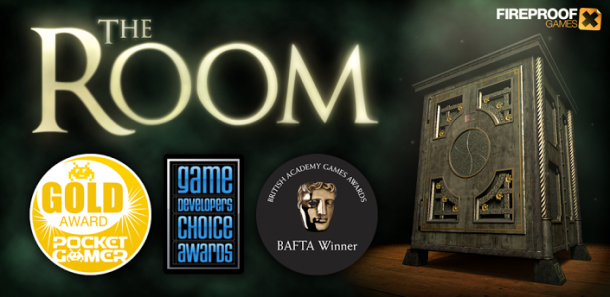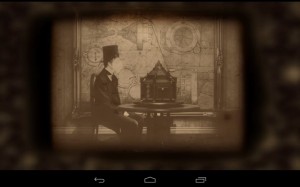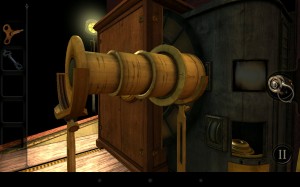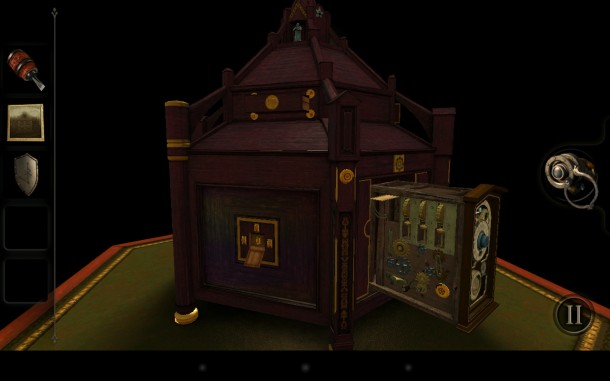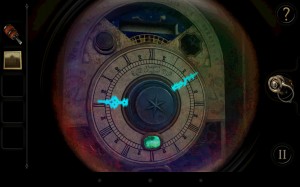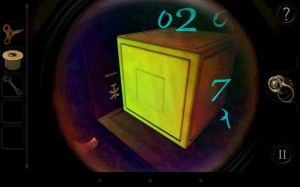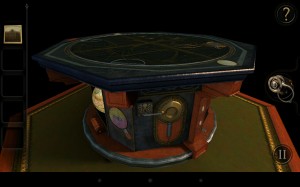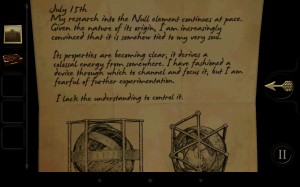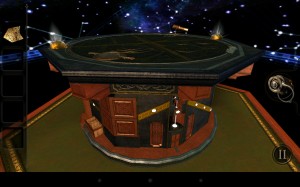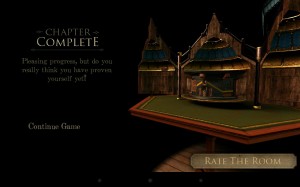Leaning back in your chair, you take a long, slow, contemplative puff on your wooden pipe hoping to receive some sort of enlightened revelation as to how to proceed next. The dim light of a nearby lamp illuminates a large, ornate “box” – for lack of better words – perched atop your work table. Just as you begin to lose yourself in thought, a glint of light bounces off of a reflective copper panel and catches your eye. Being fairly confident that you’ve already tapped, poked, and prodded that particular side of the box for all it’s worth, you try and shake the curiosity… but it’s no use. One more close inspection just might reveal the next piece of the puzzle, bringing you one step closer to the elusive Null element.
For those of you old enough to remember the 7th Guest and Myst, this particular game will certainly ring a bell. Following a similar style to these PC game classics, The Room presents you with several complex puzzle-boxes to decode using nothing but vague and well-hidden environmental hints. Each box is rendered in 3D so that you may rotate around and zoom in or out in order to inspect it for clues, and is covered with buttons, sliding panels, viewports, and keyholes. Unlocking a box (and thus completing a chapter) is a fairly linear process where one component must be unlocked in order to obtain an item or hint for the next, but the trick is in figuring out which bit to fiddle with.
Think Outside The Box
The vast majority of steps are fairly straightforward – keys that only fit certain keyholes or a string of lettered tumblers that clearly requires a hint – but the few that aren’t can be a royal pain. Some objects allow you to rotate them while others have handles attached to drawers you can “pull” towards you. One tool you’re presented with from the get-go is a magical eyepiece that unveils a hidden layer of information on certain objects, and you never know which component to look at with it on. Each interactive piece of the puzzle box can be double-tapped in order to zoom in and inspect, so at least you have that clue as a first-step. What’s more, The Room makes inventive use of the tablet’s gyro for a couple choice puzzles, stepping outside the normal bounds of what you think is possible. Interface is really the key piece of ingenuity of this game, and I regularly found myself impressed as to how it let you interact with objects on the box. The real constraint in The Room, contrary to your assumptions, is your own paradigm – IE. what you believe you can actually interact with on the screen. You’ve got to think outside the box in order to get inside.
Just You And The Room
While you’re puzzling away, don’t expect any epic cinematic soundtrack to accompany you in your time of need. Instead, The Room leaves you by yourself with only the low hum of the lamp and the sporadically creaking floors to keep you company. This ambient approach to sound adds a nice effect, seemingly improving your focus on detail while simultaneously encouraging you to simply turn off the lights and go to bed. Unfortunately, should your anti-puzzle skills be up to snuff you’ll quickly find yourself out of a game. The Room is a short game, and probably one of the few Android games I’ve actually beat during my testing. Luckily, their website is already advertising for The Room 2.
The Verdict
The Room is a refreshing break from the hordes of monotonous, side-scrolling, cartoonish action games on the market. While the puzzles may only rank above-average in terms of difficulty, they make good use of modern tablet controls. The rooms themselves are immersive and engrossing, and puzzle hints are well-buried within the décor of the boxes themselves. Unfortunately, just as you’re getting used to how the various types of puzzles work… it’s over. That being said, I’m certainly looking forward to the (hopefully lengthier) sequel.
